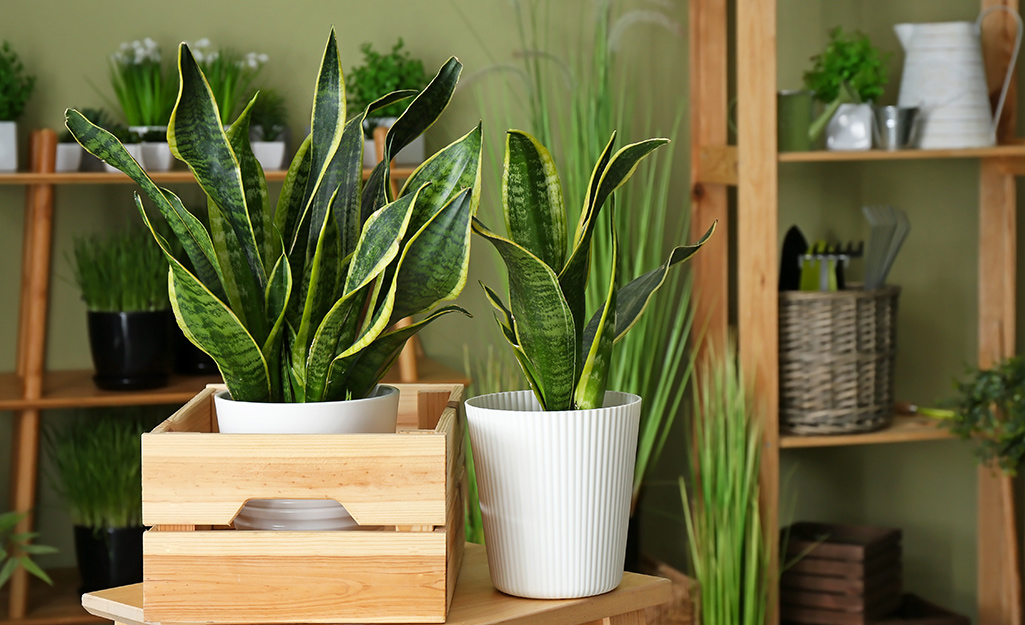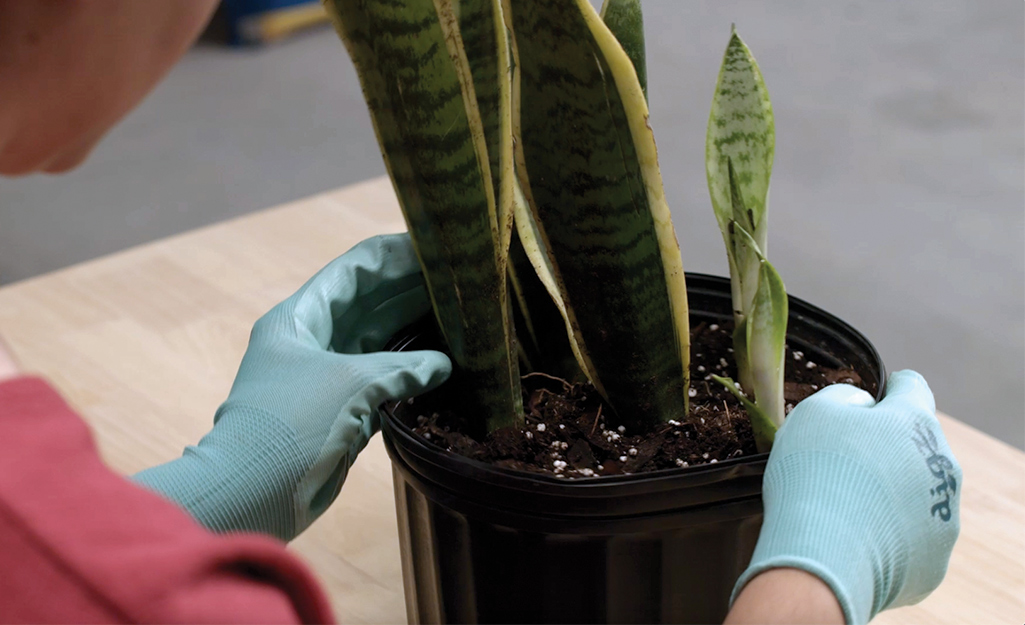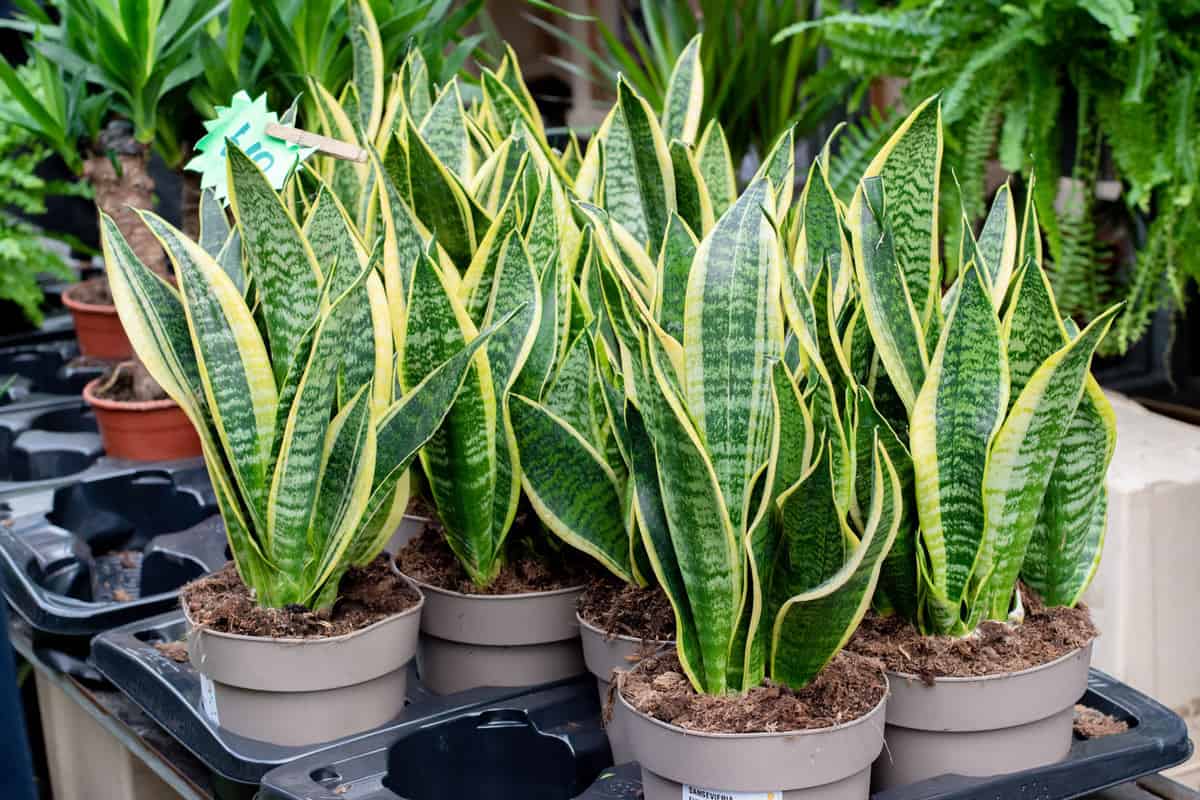Snake plants also known as mother-in-law’s tongue or Sansevieria are popular and low maintenance houseplants. With their upright, sword-shaped leaves, snake plants add height and structure to indoor displays. While they are quite adaptable, selecting the right pot is key to keeping your snake plant healthy and helping it thrive.
The pot is more than just a decorative accent – it impacts watering drainage and overall plant growth. Follow this guide to choose the optimal pot for your snake plant.
Pot Material
The pot material is important because it affects air circulation and moisture control. Here are some top options:
-
Terracotta or clay – These porous pots allow air exchange and promote drainage. The breathability prevents soggy soil. Terracotta is an excellent choice for snake plants.
-
Ceramic or glazed pots – With very limited breathability, glazed ceramic pots retain more moisture. Ensure the pot has drainage holes to prevent wet soil.
-
Plastic – Affordable and lightweight plastic pots hold moisture longer than terracotta. Make sure the pot drains well and doesn’t stay overly wet.
-
Concrete – Like terracotta, concrete is porous and provides good aeration. It is heavier and adds stability for tall snake plants.
Terracotta and concrete pots are most recommended for snake plants because they mimic the well-draining conditions these succulents prefer in nature. The breathability prevents overwatering.
Pot Size
Choosing the right sized pot prevents stunted growth or instability in snake plants:
-
Size up the pot 1-2 inches wider in diameter than the current roots to allow for new growth.
-
Avoid oversized pots that leave a lot of empty space for the roots. This can cause weak, floppy growth.
-
For mature plants, choose a pot 1/3 wider than the root ball to stabilize the plant.
-
Tall, narrow pots provide support for upright leaves and prevent toppling.
Snake plants have shallow root systems. They require tight quarters and resist being repotted in very large containers. Follow the size up guidelines to pick the ideal pot dimensions.
Drainage Holes
Proper drainage is non-negotiable for snake plants. Ensure any pot has multiple holes in the bottom to prevent soggy soil.
-
Adding extra holes can improve drainage in ceramic, glass or glazed pots. Use a power drill with a ceramic drill bit.
-
Elevate plastic pots to enhance drainage if they sit in decorative cache pots without holes. Place pebbles or blocks under the inner pot.
-
For decorative pots without holes, repot the plant in a plastic nursery pot that fits inside. Or carefully remove the snake plant to water it, then replace.
Good drainage is crucial to avoid root rot and other problems in snake plants. Prioritize pots with adequate holes or modify them as needed.
Additional Tips for Picking the Best Pot
Beyond getting the size and materials right, keep these other tips in mind:
-
Snake plants grow slowly. Pick a pot that allows 1-2 years of growth before needing repotted again.
-
Add weight for stability with heavy concrete or stone pots that counterbalance tall leaves.
-
Use a pot saucer to protect furniture from water runoff and stain marks.
-
Match the pot style to your decor – from rustic terracotta to sleek glazed ceramic.
-
Consider using a cache pot (outer decorative pot) to upgrade basic plastic nursery pots.
-
Repot in the spring or summer when the snake plant is actively growing. Avoid winter repotting.
-
After repotting, wait 1-2 weeks to water and allow any root damage to heal.
-
Divide overcrowded plants into separate pots to encourage new growth.
Take your time selecting the ideal pot. The investment will pay off with a thriving, healthy snake plant that brings beauty indoors.
Common Potting Mistakes to Avoid
When it comes to snake plant pots, here are some common errors:
-
Using a pot that is too large – This leads to instability and lackluster growth.
-
Choosing a non-draining pot or without drainage holes – Wet soil causes root rot.
-
Repotting too frequently into larger pots. Let plants become very rootbound.
-
Using dense soil that retains moisture and suffocates roots.
-
Allowing decorative cache pots to accumulate water at the base of the pot.
-
Repotting during the wrong season – Avoid actively growing spring and summer.
-
Watering too soon after repotting – Wait 1-2 weeks for any root damage to heal.
Learning what not to do when picking a pot is just as important as the ideal pot characteristics. Avoid these missteps for a healthier snake plant.
Ideal Potting Mix
In addition to the container, use an appropriate potting mix for snake plants. The soil needs to be:
-
Very well-draining – Coarse sand, perlite or gravel improves drainage.
-
Lean and lightweight – Avoid dense, moisture-retentive soil.
-
Nutrient-poor – Snake plants grow in poor soils naturally and are prone to fertilizer burn.
-
Slightly acidic – A pH between 6.0-6.5 is perfect.
A simple mix of equal parts potting soil, perlite and sand makes an excellent snake plant soil. Or use a cactus/succulent mix if available.
Potting Tips for a Healthy Repot
Follow these tips for repotting success:
-
Water the plant 2-3 days before repotting to moisten and loosen the roots.
-
Carefully remove the plant and loosen the old soil around roots.
-
Trim any dead roots with sterile shears to encourage new growth.
-
Place some fresh, well-draining soil in the bottom of the pot.
-
Position the snake plant in the new pot and add soil around the base and roots.
-
Check that the root crown sits at soil level – not buried too deep.
-
Lightly tamp the soil down but do not pack tightly.
-
Hold back on watering until new root growth is established in 1-2 weeks.
Follow this repotting process and your snake plant will quickly settle into its new home. In the right pot, it will reward you with vibrant, vertical greenery.
Choose a Location for Your Snake Plant

Sansevieria is a tropical plant that thrives in low light. Choose a spot near a sunny window inside where the plant will get bright light that comes in through the window.
A snake plant makes its home in temperate climates. It is winter hardy only in USDA zones 9 to 11. In other zones, keep your snake plant as a houseplant for most of the year. In the summer, you can move it outside. Bring it back in as the weather cools.
Snake plant is one of many houseplants that clean the air and have been shown by science to make people less stressed and more productive. Houseplants that work hard can catch and soak up up to 87% of the volatile organic compounds that are found in everyday things like carpet, ink, and cleaning products.
How to Select a Snake Plant

Look for a snake plant with a rich green color and unbroken leaves. With a few fingers, touch the potting soil. It should be just slightly damp. You should get a planter for the snake plant that is a bit bigger than the plant itself. Look for a wide planter that will balance this top-heavy plant. You can choose a self-watering container, or a planter and saucer. Terra cotta clay pots are a good choice for sansevieria because they are naturally drying.
Best Pot for Snake Plant: Top Choices for Optimal Growth! #snakeplant #houseplants #snakeplantcare
FAQ
Do snake plants need a special potting soil?
Do snake plants like to be crowded in a pot?
What kind of pot should a snake plant be in?
Do snake plants like deep or shallow pots?
- The Ultimate Guide to Growing Strawberries in Raised Beds - August 8, 2025
- No-Dig Garden Beds: The Easiest Way to Grow a Beautiful Garden - August 6, 2025
- How to Protect and Preserve Wood for Raised Garden Beds - August 6, 2025

